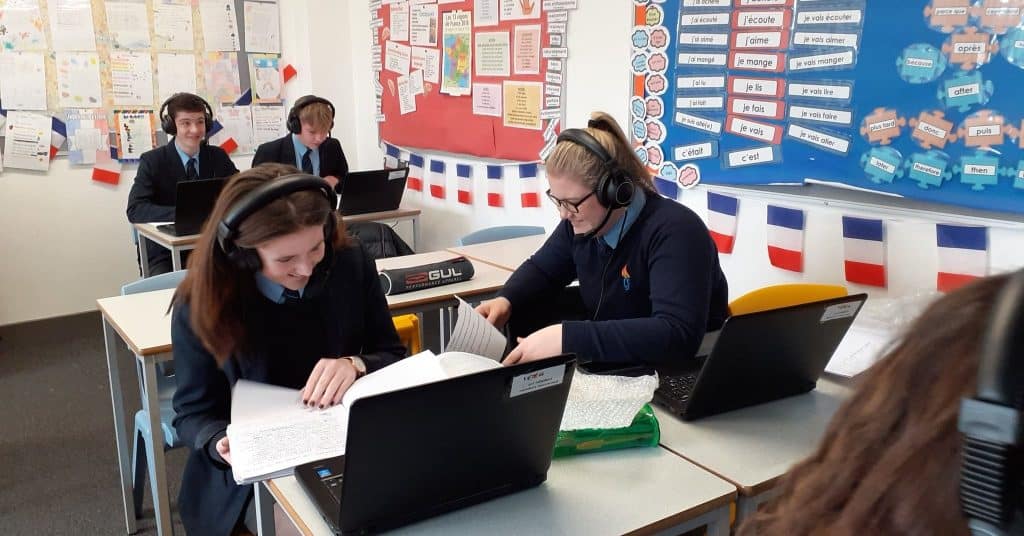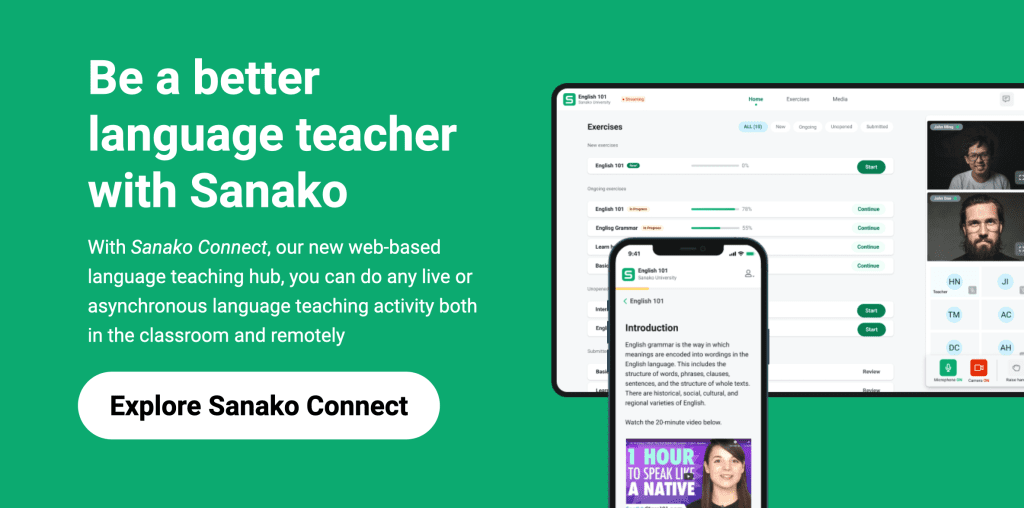A recent paper from Oxford University Press (OUP) identifies a “central challenge” for ELT and ESL educators. It is vital, the report outlines, that educators “create and implement effective practices to support students in becoming lifelong learners who believe that they can learn another language and are able to assume responsibility for their learning.”
The report concludes that the best response to this challenge is to encourage teachers (and all stakeholders in the student’s education) to support student agency. This concept is defined as “the feeling of ownership and sense of control that students have over their learning.” This blog post outlines five practical ways educators can support students to build such agency when designing language lessons for online and offline delivery.
What is “student agency”?
In addition to the above definition, students who have agency believe that they are in control of their learning and feel able to learn and improve. Students act as active participants in their learning and are fully engaged in both the design of their learning experience and the achievement of their learning objectives. As such, Cooper (2017) outlines, learners have “choice and voice in their educational experiences as they progress through competencies.”
The Oxford University Press report argues that student agency can be best developed through meaningful interactions. These, they suggest, arise when educators realise that:
“learning is more effective… when teaching practices support learners as active agents in their learning.”
Why is student agency important?
The development of student agency is not only a powerful tool for learners’ ongoing academic projects, but it is also vital for supporting their future lives. OUP’s research suggests that learners with agency are able to learn from their mistakes, are resilient, and can more easily adapt and persevere. This makes them more likely to achieve language learning success and to be better prepared to handle the challenges of a volatile and uncertain global environment.
How can educators support the development of student agency?
In her 2020 paper, ‘Principles for Developing Learner Agency in Language Learning in a New Eduscape with COVID-19’ Dr. Guofang Li, Professor at The University of British Columbia articulates five ways in which language teachers can build student agency. In fact, her paper states the case for a completely different way of looking at language teaching to prioritise the development of learner engagement and identity.
1. Focus on teaching language literacy
At the heart of Li’s paper is a clear move from seeing a target language as a list of grammar and vocabulary to master to seeing language learning as a way to build literacy in L2. This builds on ACTFL’s definition of language literacy as the “purposeful use of language skills (such as reading, writing, listening, speaking, and viewing) for purposeful communication.”
As such, Li argues, teachers should not teach the language through drills and prescriptive exercises, but should prioritise integrated activities which incorporate one or more of these skills and which are focused on achieving a clear “communicative purpose.” Importantly she recommends providing “age-appropriate texts and tasks that engage learners in reading, writing…and higher-order thinking.” Clear differentiation for students of different abilities is also deemed essential to maintain learners’ engagement and motivation.
2. Ensure that lessons are culturally relevant to students
It can be a challenge for teachers to ensure that they are correctly teaching the target culture as part of teaching the language. As Li points out, it is particularly important to ensure that this isn’t based on international norms or stereotypes or that lessons/resources are simply delivered without any critical consideration.
As such, teachers should make the most of the “local languages and cultures” that they find even within their own classrooms and student groups. Li makes it clear that these can provide “rich cultural, linguistic, and cognitive resources” for teachers to create powerful and relevant lessons, whatever the students’ target language.
Of course, making the most of the breadth of global film, music, and literature that’s widely available online is an easy way for students to fully immerse themselves in the culture of their target language.
3. Promote language interaction rather than language input
For students to develop language fluency, it’s vital that they are given as many opportunities as possible to practice their skills. It’s vital that teachers, therefore, prioritise student output rather than their own input.
Li’s paper details that teachers should allow the “development of fluency alongside the emphasis on accuracy in language learning”. She highlights how teachers should identify and maximise opportunities for authentic communication. These should include paired or small group discussions, presentations, debates, interviews, and other collaborative activities.
The use of appropriate digital technologies, such as Sanako Connect, can be powerfully deployed to increase students’ interaction and language output both on and offline. International research clearly demonstrates how such digital learning tools can maximise student engagement and boost interaction in the target language, both between students and teachers and between students themselves.
4. See students as producers of language
Li’s fourth principle aims to encourage educators to move away from the traditional model of language imitation towards one that encourages students to be more creative in their expression and use of their target language.
Rather than frequently repeating and imitating model texts, Li proposes that such texts should instead be seen as a starting point for collaboration and creativity, inspired by the learner themselves. In so doing, students are better able to find their voice in all forms of their target language and better able to express their ideas and opinions.
5. Conduct engaging assessments
Finally, Li argues, learning assessments also need to be more engaging for students. They should specifically seek to build on the above elements by prioritising students’ individual needs and strengths to offer students “options, personalization, and choice.” This process, Li reiterates, is most effective when educators write learning outcome statements for and with their students, thereby ensuring that students understand the expectations and are motivated to exceed them.
The recommendation is also made that teachers should offer students a variety of different ways to demonstrate their knowledge and understanding. Educators should seek to unleash students’ creativity through illustrations, posters, presentations, speeches, songs, even TikToks! Whatever it takes to encourage students to engage and demonstrate their fluency and progress.
If you’d like to find out more about how Sanako’s language teaching products could help your educators and wider institution to build and develop student agency, please contact us now to arrange your FREE demo!
This blog post was last updated 14 June, 2023.

